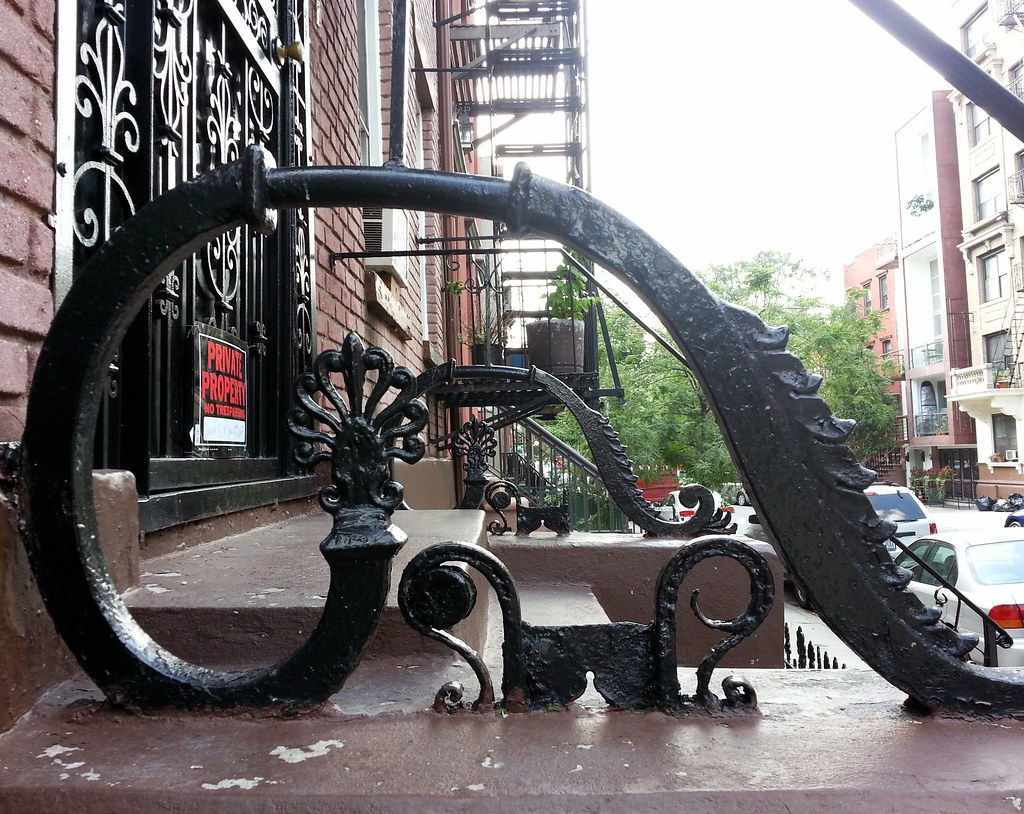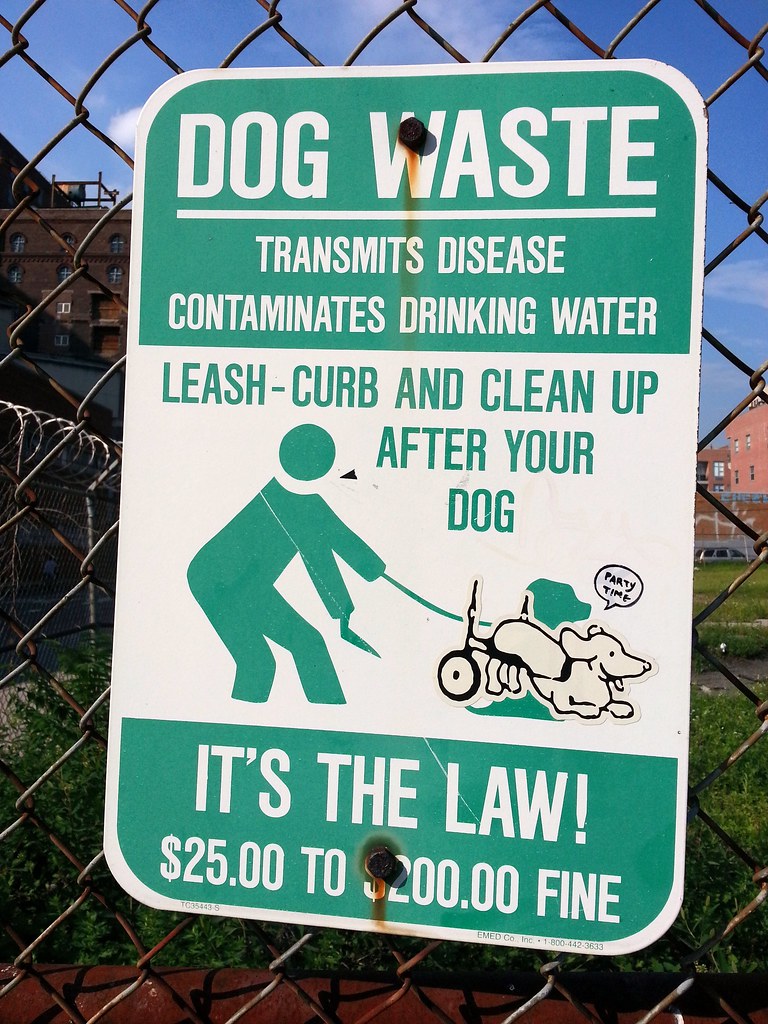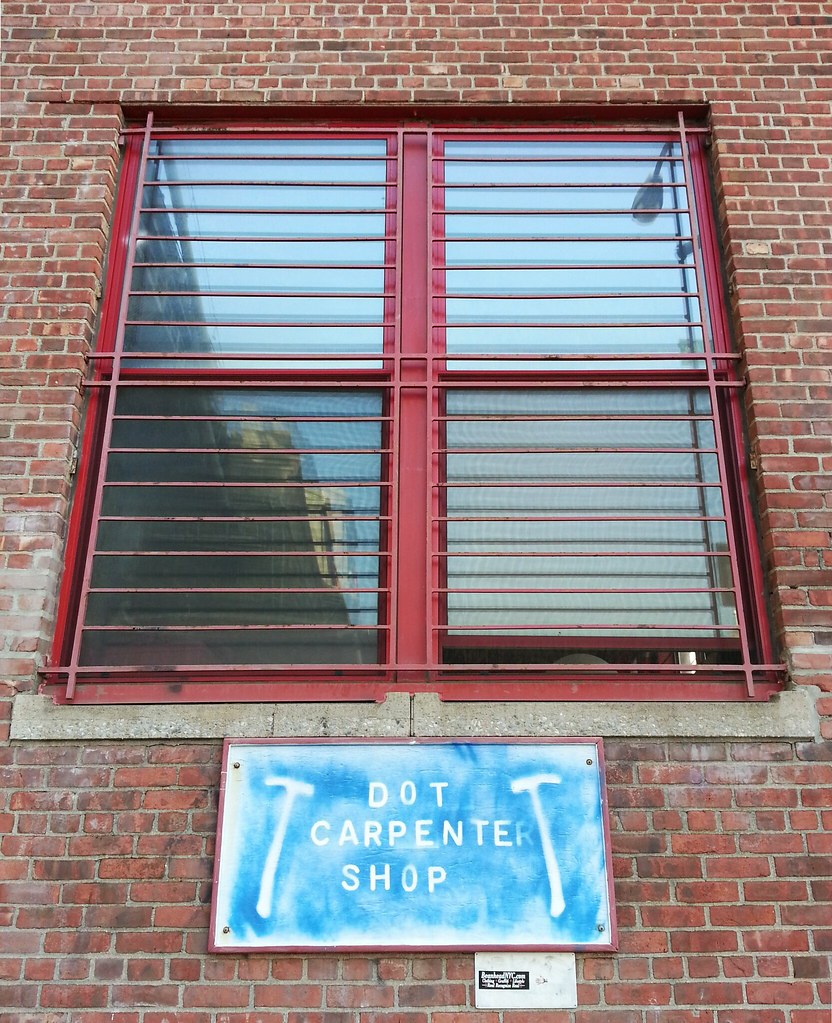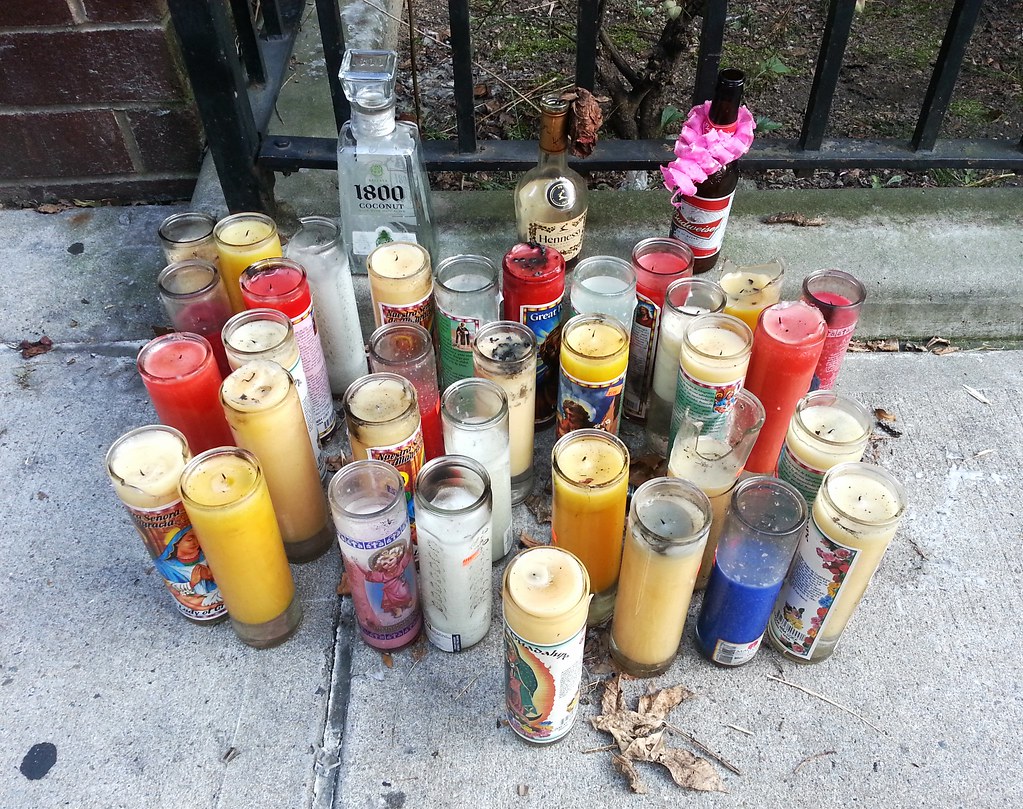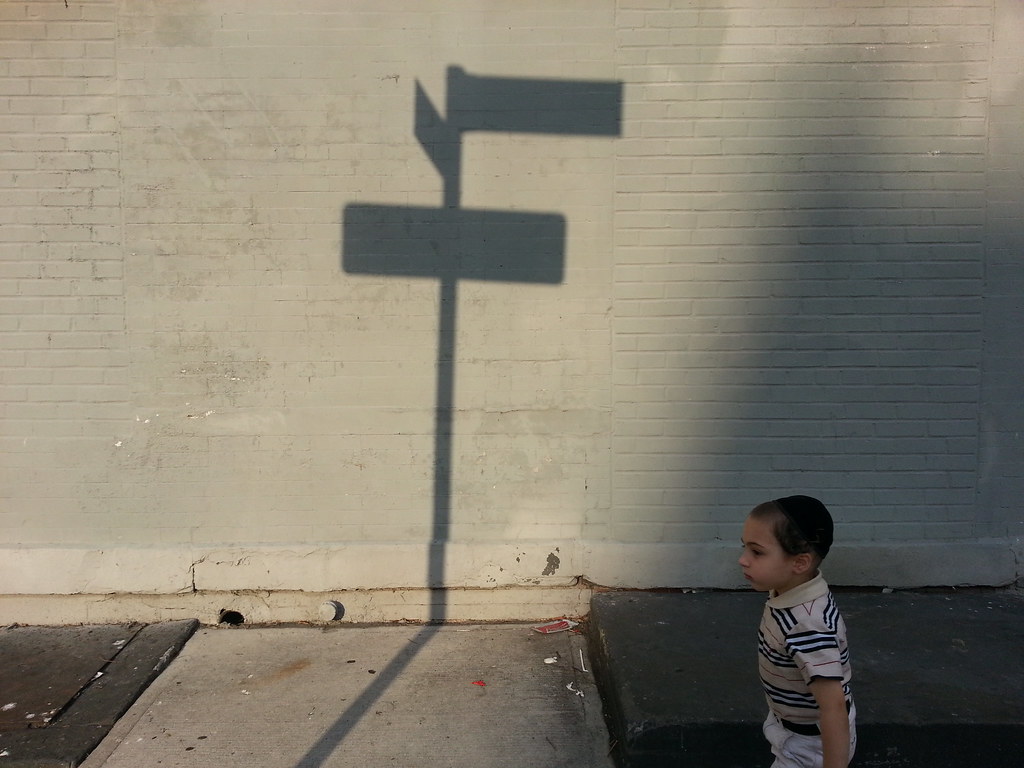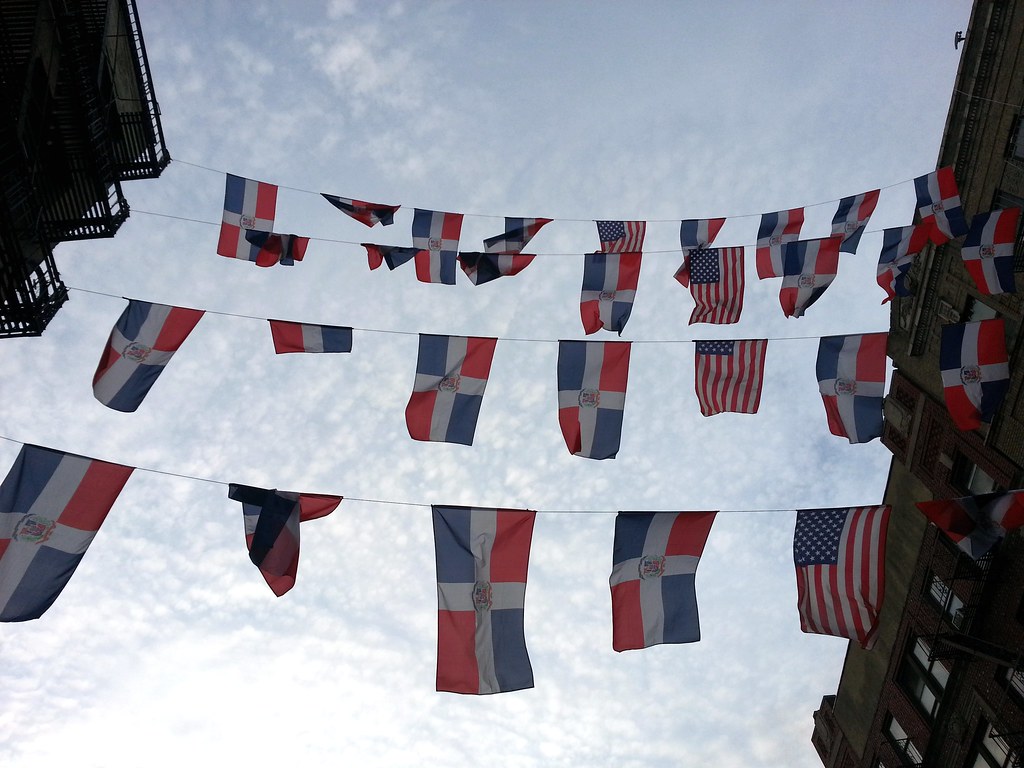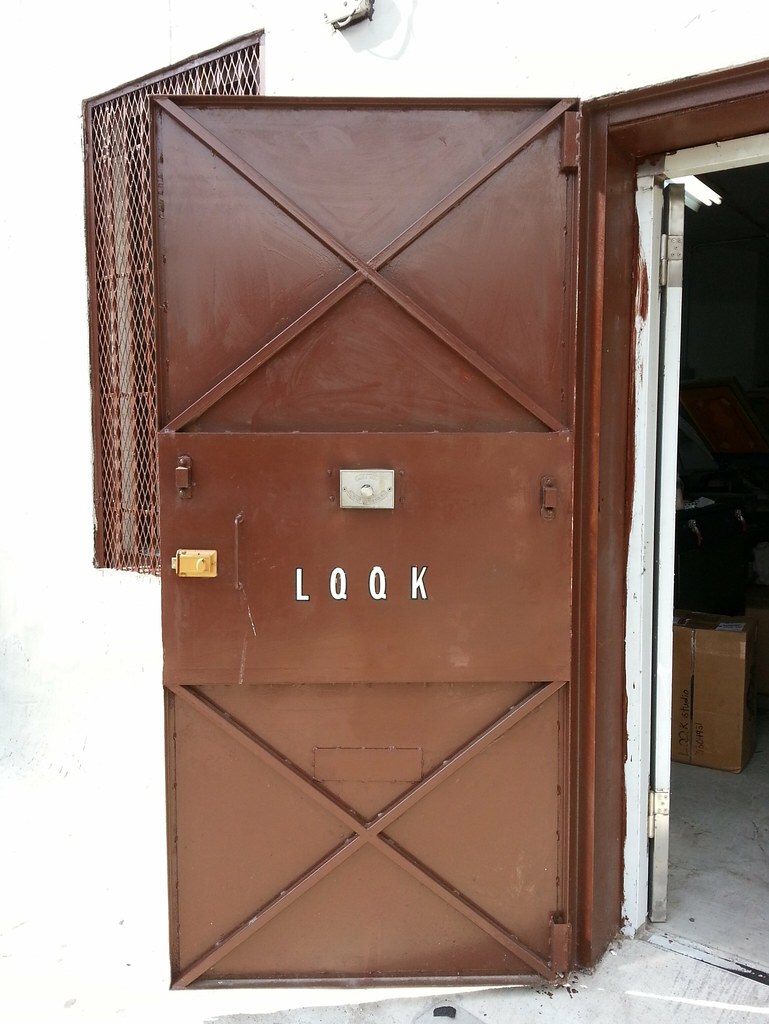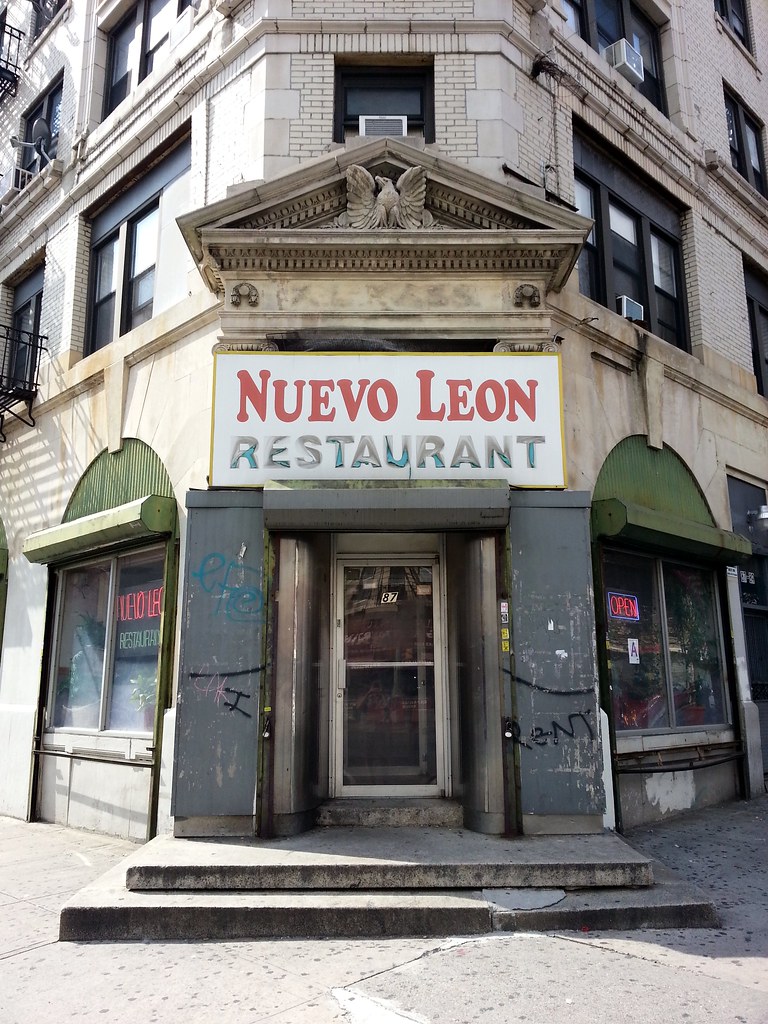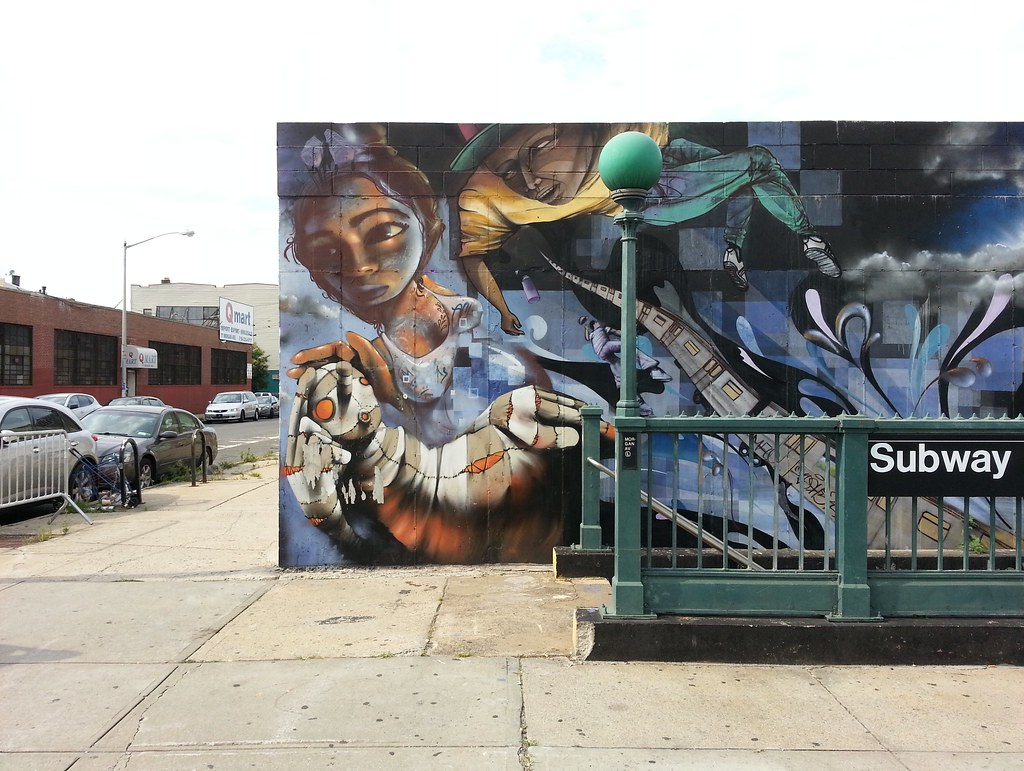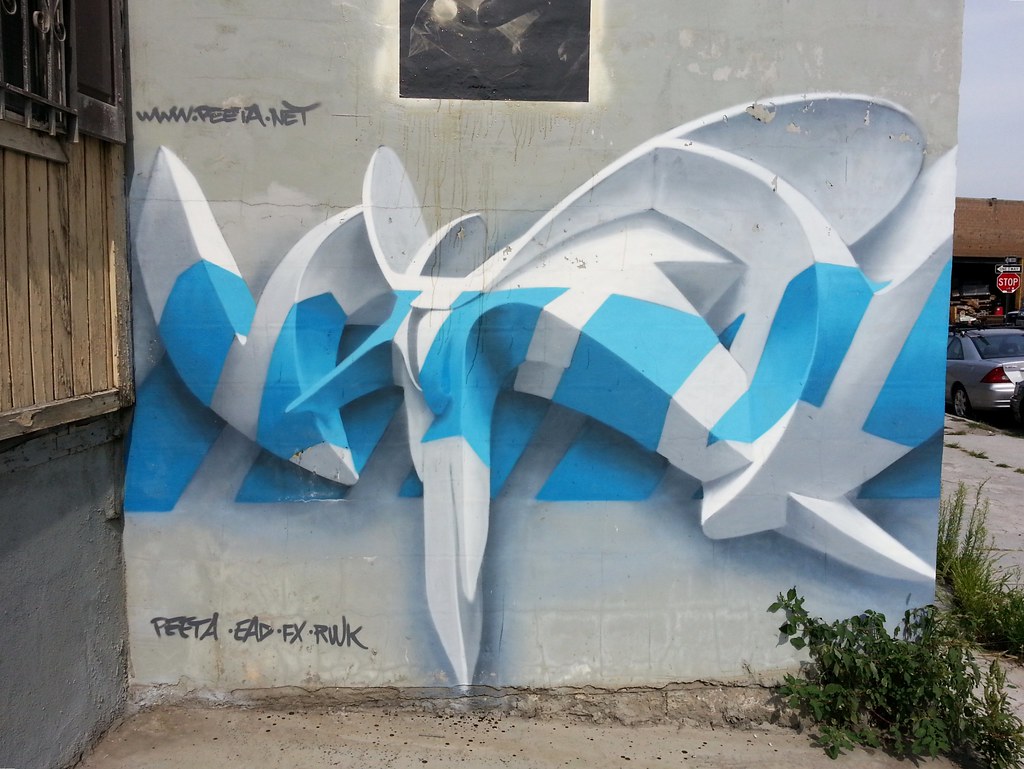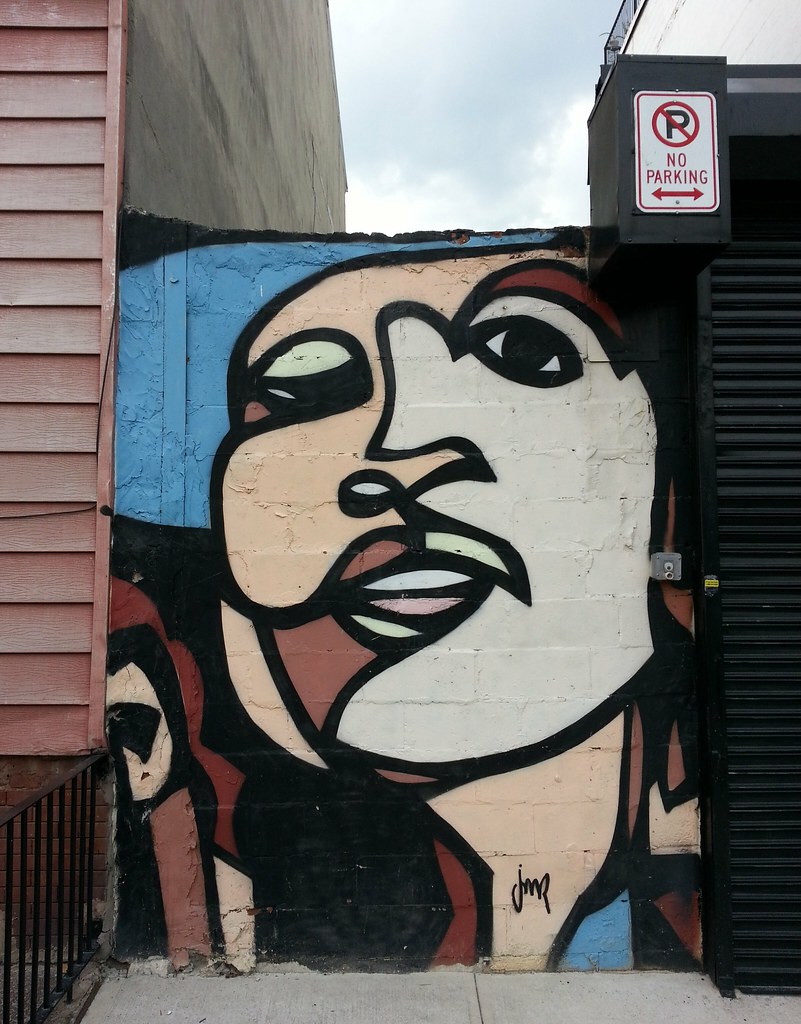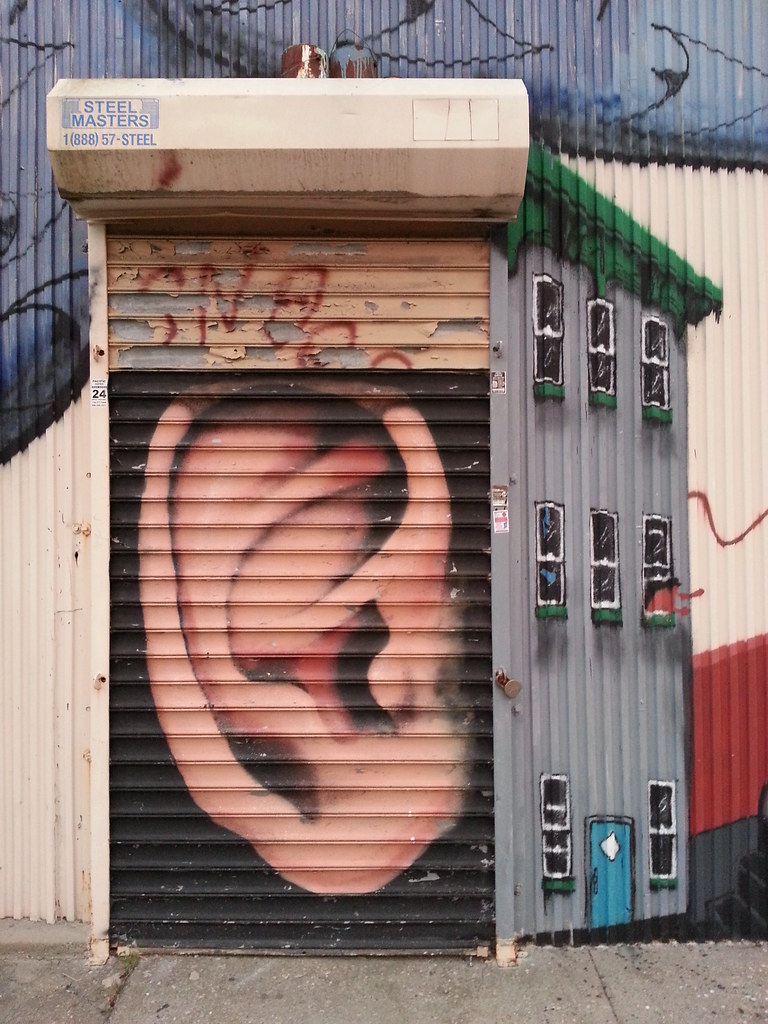
Another bike on bike, and another look at the old Domino Sugar refinery
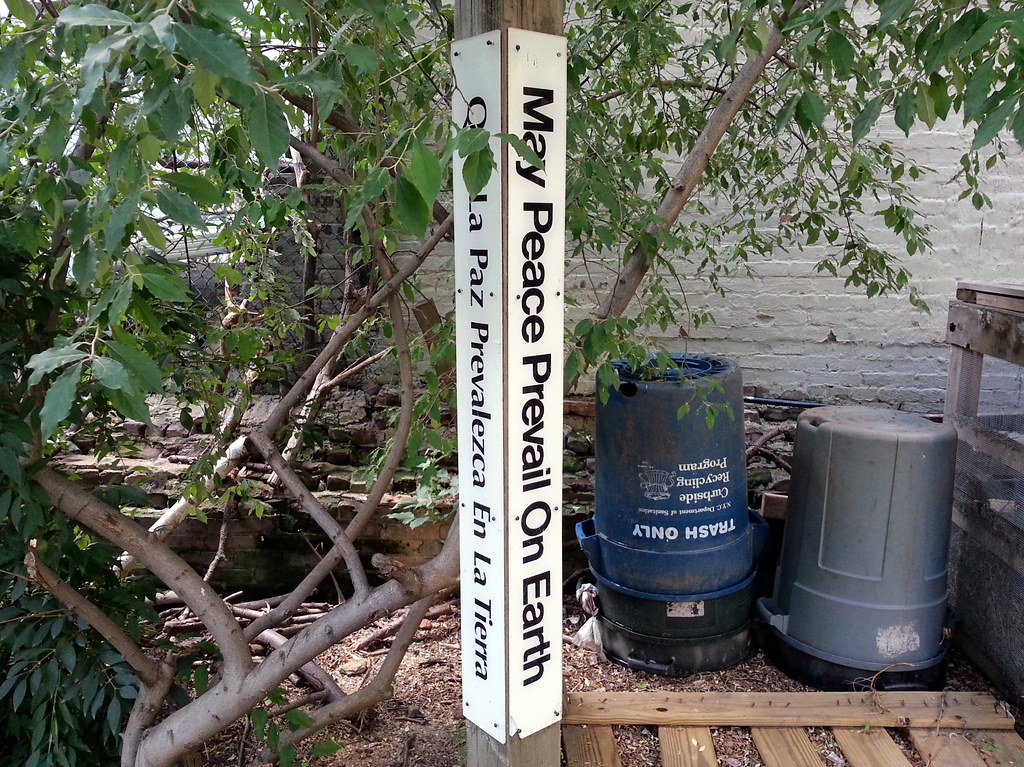
This Peace Pole is planted in Williamsburg's Earth Spirit community garden.
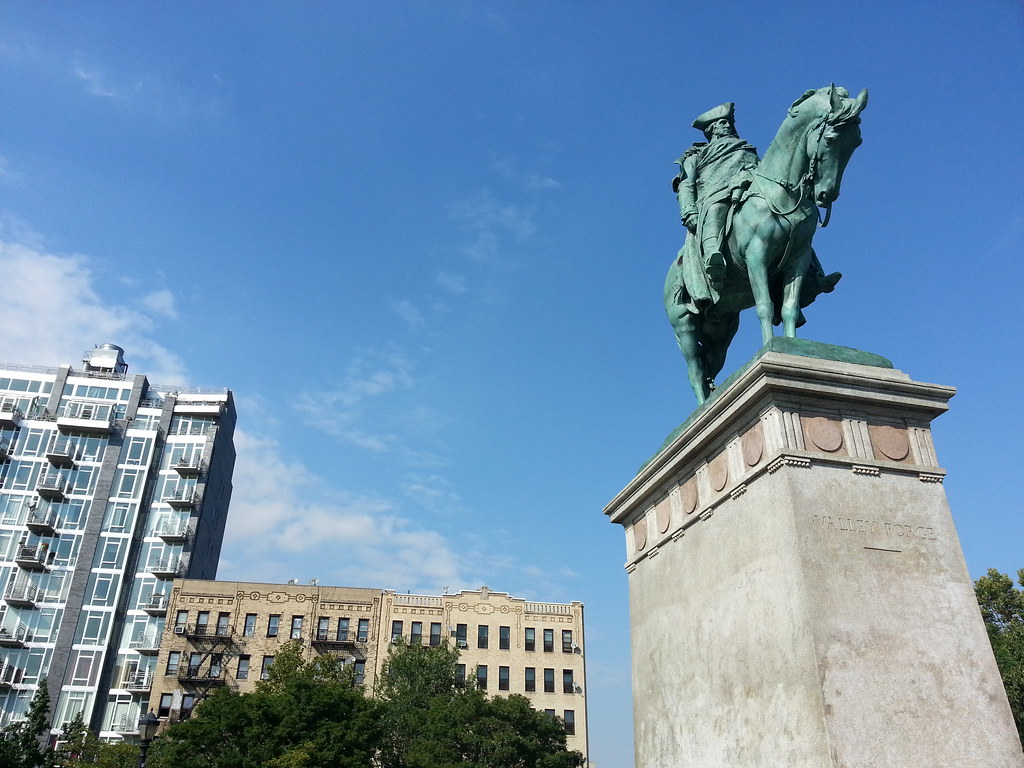
George Washington is bundled up for a long winter at Valley Forge.
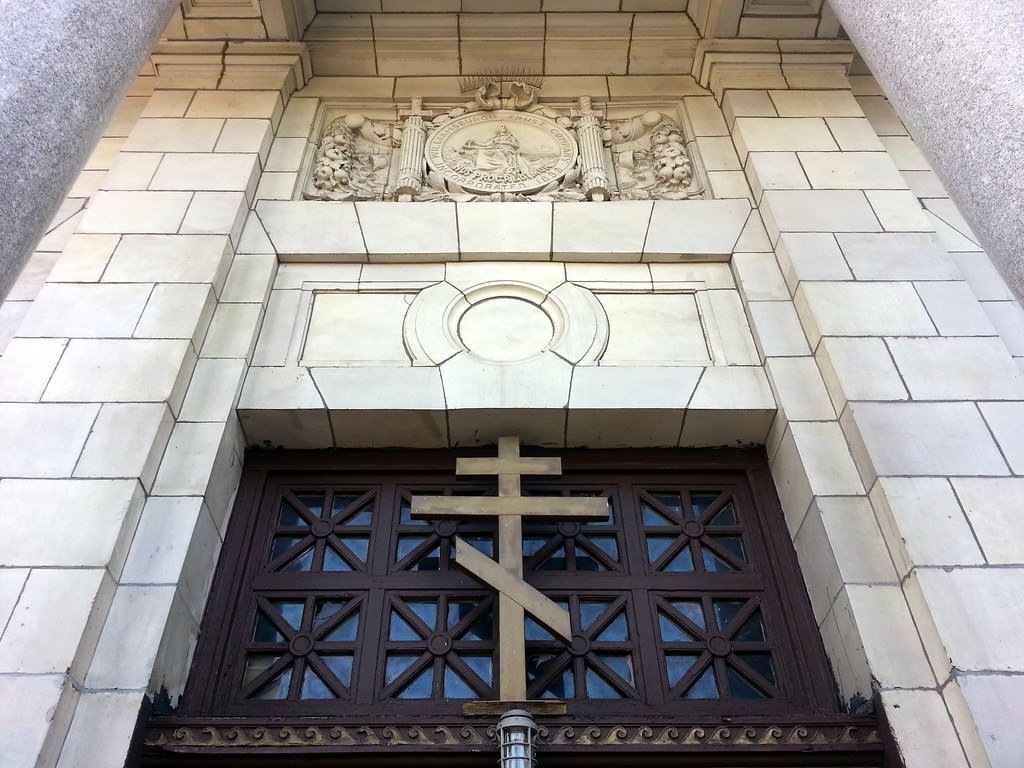
The former Williamsburgh Trust Company building is now the Holy Trinity Cathedral of the Ukrainian Autocephalic Orthodox Church in Exile.
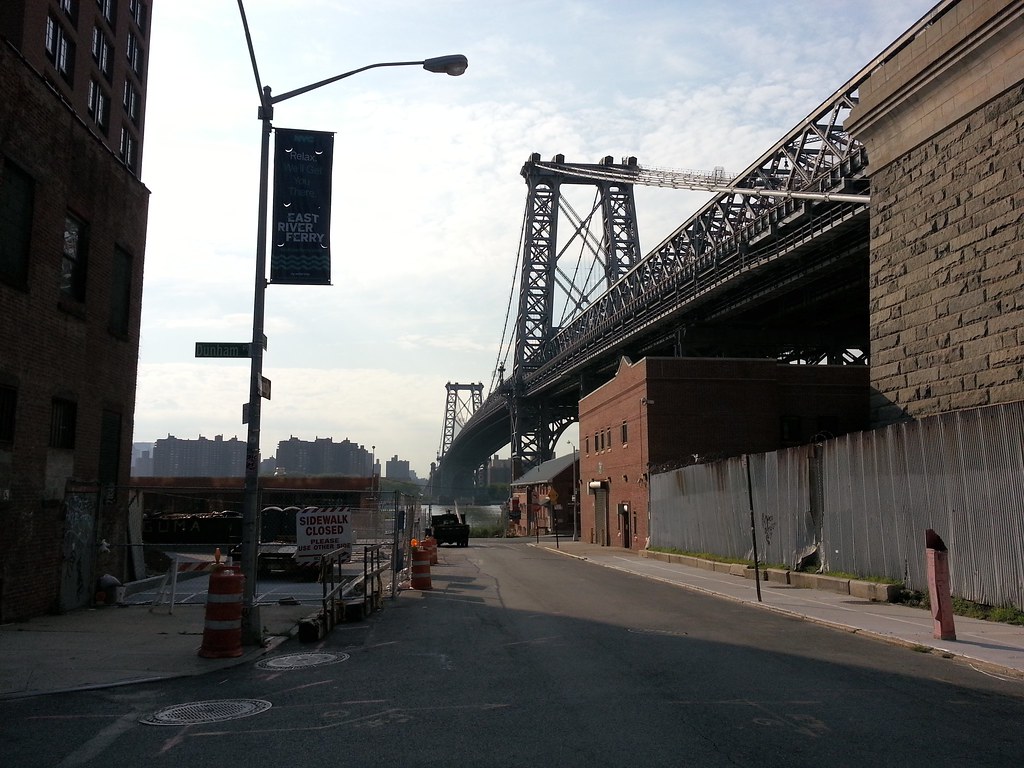
To quote from an earlier post:
The world's longest suspension bridge from 1903 to 1924, the Williamsburg Bridge has a very unusual design: as you can see in this photo, only the center span (the section of the bridge between the two towers) is suspended from the cables.
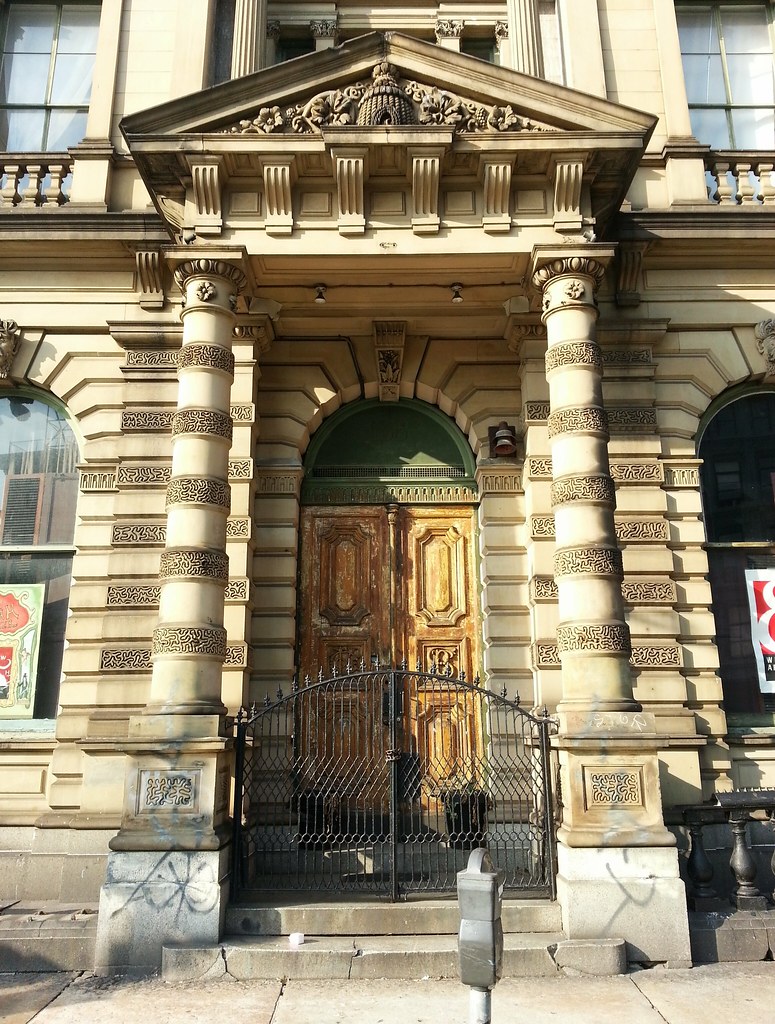
of this baby. The beehive in the tympanum above the door symbolizes industry and thrift, and is a motif often found on older banks in the city. The most notable feature of this building (in my opinion, anyway) is its seriously squiggled column and wall sections (closer view here), which predate Keith Haring's work by more than a century.

This playground's Old Testament name is presumably a reference to the large Hasidic Jewish population here in South Williamsburg; note the Sukkot balconies on the building to the left.
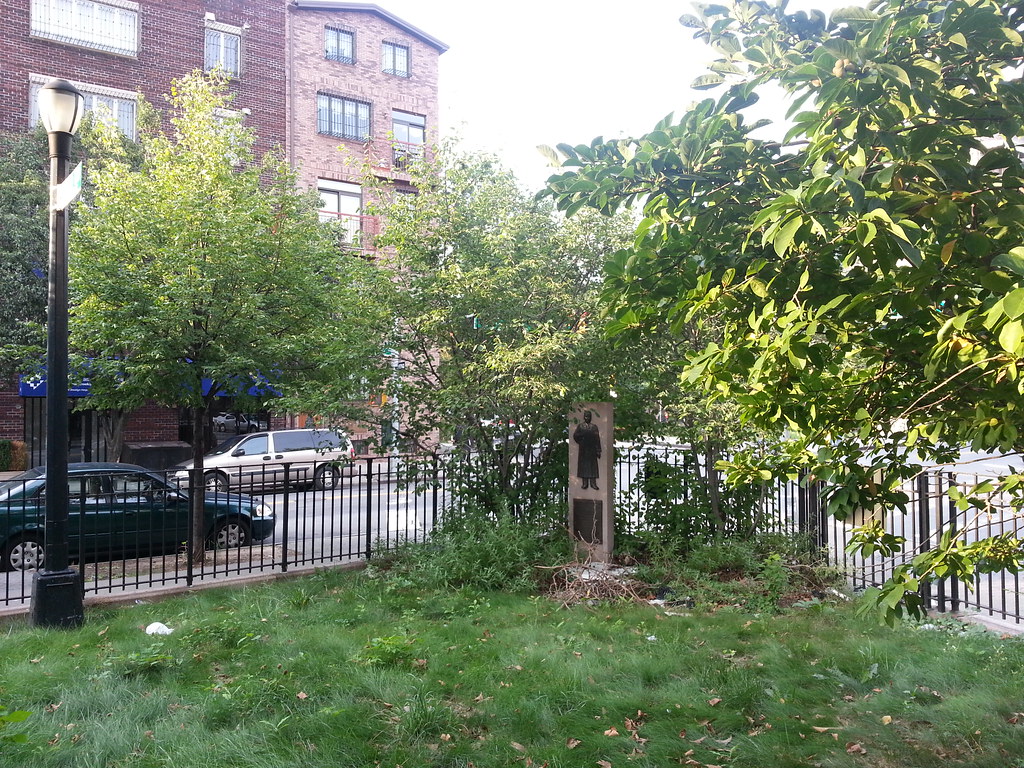
Honoring the former legislator and judge with a little stele strangely hidden from public view; I had to enter through a gate at the far side of the square and tromp across the unmowed grass to take a look at it.

mean mean mean mean
This sign is one of about two dozen posted outside the Jonathan Williams Daycare Center in Williamsburg protesting the mayor's recent proposal to shut down this and hundreds of other city-run daycare and after-school programs.

Founded by homeless canners, Sure We Can is a homeless-friendly beverage container redemption center that seeks to eliminate the unnecessary hardships and demeaning conditions that canners face elsewhere. As the door suggests, there is also a garden on site; it utilizes many repurposed materials recovered from people's garbage.
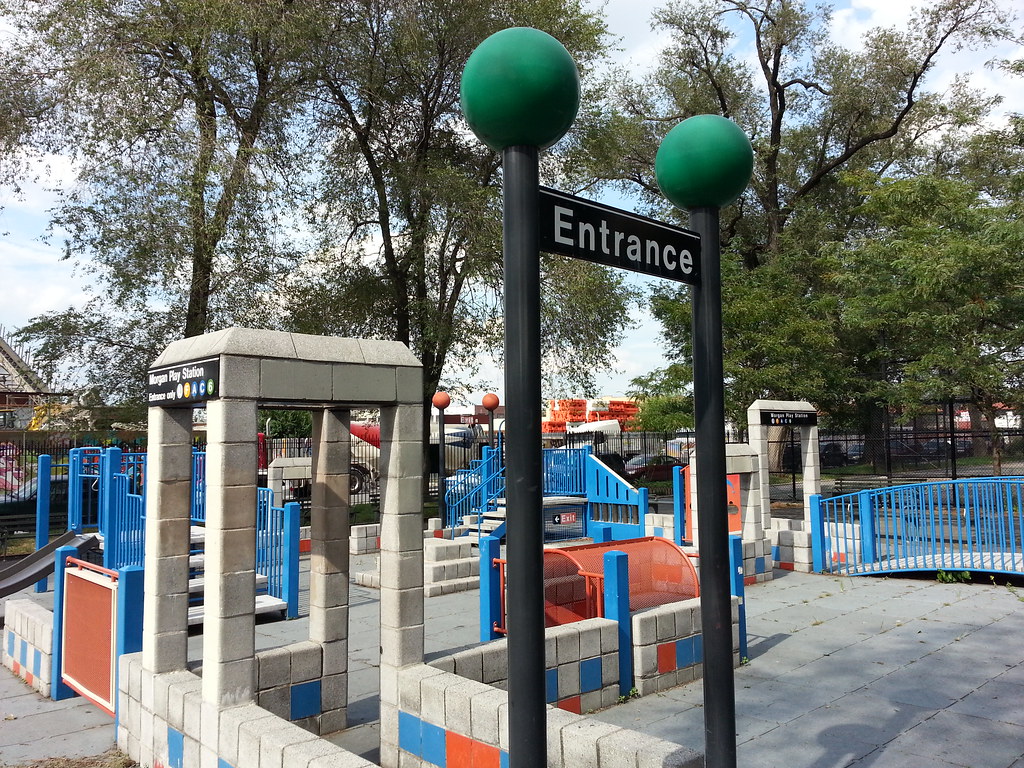
This subway-themed East Williamsburg playground claims that a perplexing array of trains stop here: the L, F, A, C, and 6. (While the L is the closest subway line to this spot, the 6 does not even enter Brooklyn.) Perhaps the playground was designed by Laurentius Farnsworth Aeolian Casimir the Sixth?
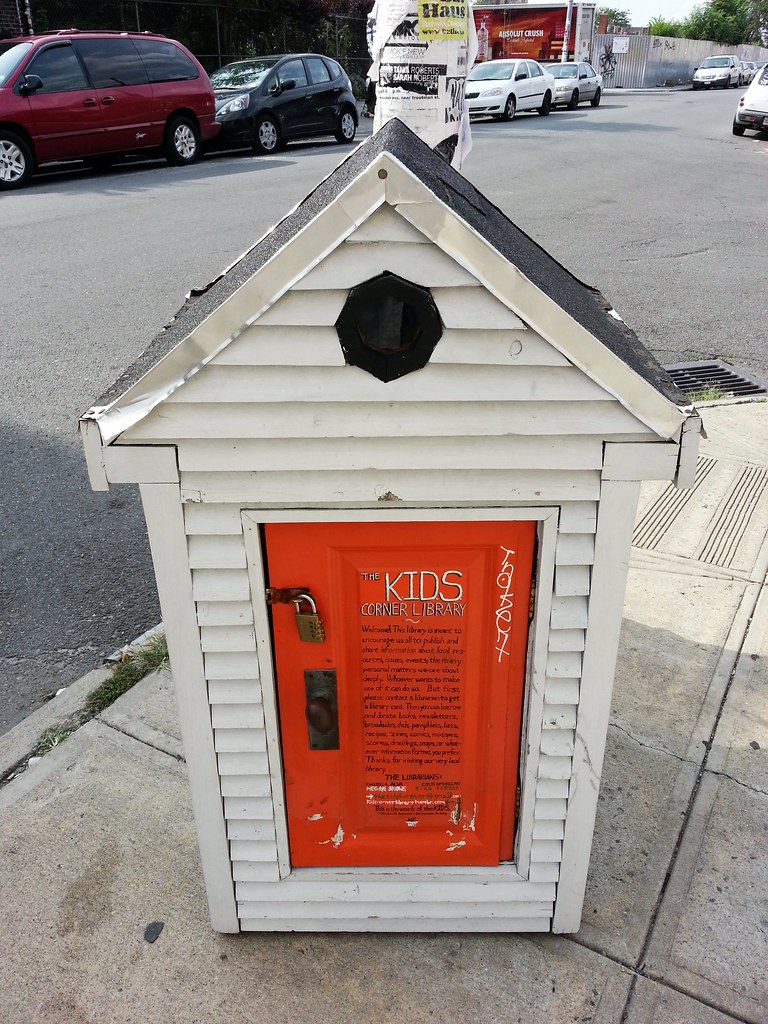
This micro-library has changed location (and name) since we last saw it.
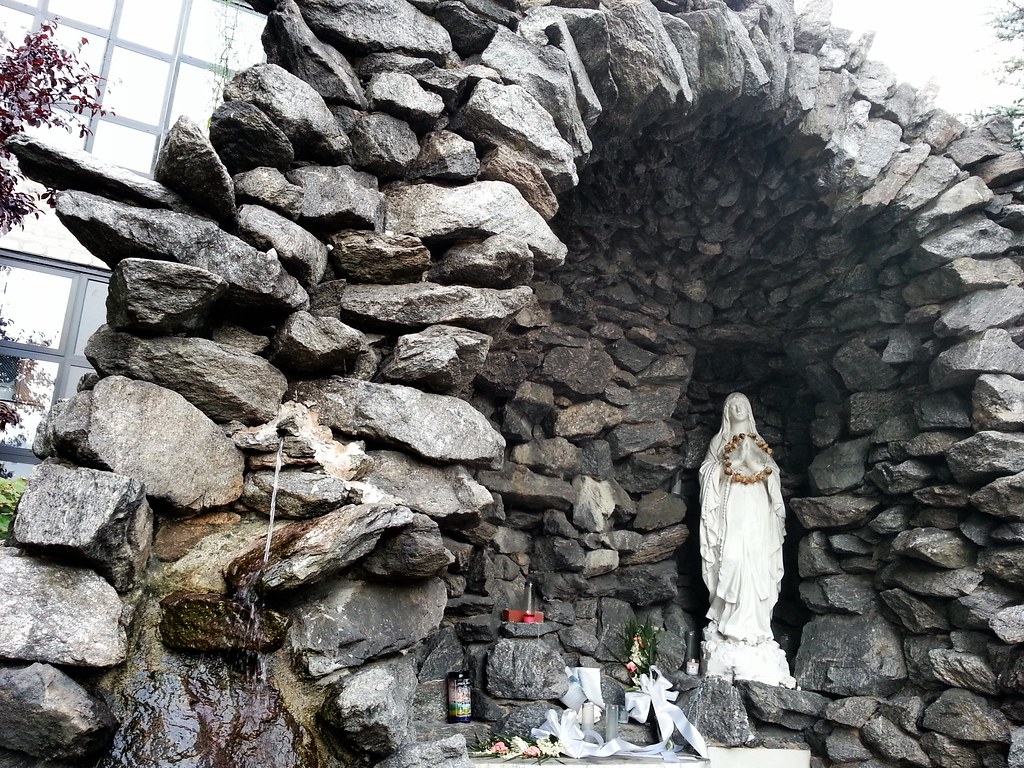
Complete with running water, this grotto at Our Lady of the Rosary of Pompeii in East Williamsburg is a smaller (though still quite impressive) one of these. A nearby plaque reads: "This shrine has been erected by the faithful in honor of Our Lady of Lourdes that she may protect the boys in the armed forces — May 30, 1943".

Regardless of your feelings about the mayor's proposed soda ban, it's probably wise to ignore any advice on the subject given by a soda distribution truck.

This property was donated by Sarah Ann Wyckoff in 1868 under the condition that no building ever be constructed here. Technically a park, it was paved over in the 1930s (with the approval of a Wyckoff descendant) after it was deemed too difficult to maintain as a green space. What a lovely tribute to the family!

spray something.
Another good take on the MTA's central doctrine of paranoia

You may remember this bizarre structure from a previous post; you can examine it for yourself in Street View. The last time I stopped by, this was the word on the street:
A man I met outside today told me it's a kosher dairy restaurant by the name of Klein's. He said the owner used to operate out of a trailer on this little triangle bounded by Bedford Avenue, Keap Street, and Williamsburg Street West. The land, he told me, was owned by the Parks Department, but the restaurateur had been stationed there more than seven years when they came around to evict him, and there's some law that says that if you've occupied someone else's property that long, they can't kick you off.That sounded fairly dubious to me, but I did discover that the tiny triangle on which it sits is actually parkland, even though it bears no visible indication of this. And there is a legal doctrine, known as adverse possession, under which someone can obtain possession of someone else's property after a certain period of continuous use (ten years in New York State).
I mentioned this all to my buddy Dan (of Verizon trailer fame), who is a real estate lawyer. He didn't think the adverse possession explanation held water, and so we wondered if perhaps Mr. Klein had struck some kind of deal with the city that would allow him to remain on this "park" operating as a vendor, like the Shake Shack in Madison Square Park or the Wendy's in Keltch Park.
Dan found a list of Parks concessionaires, but Klein's is nowhere to be seen. There is a mention, however, of a Golden Ring, Inc., whose description (falafel, etc.) and address (595 Bedford Avenue) match those of Klein's. The map on the description page points to this spot here in Williamsburg, although, strangely, the park listed as the site of the restaurant (Pierrepont Playground) is located a couple of miles away in Brooklyn Heights. If you search Google, you'll discover that Klein's is often also listed as Golden King, which sounds an awful lot like Golden Ring...
I decided to make a little detour today to visit Klein's once more. An employee, or perhaps Mr. Klein himself, was entering the building when I got there, and I asked him what the story is with this place. He said to come inside and he would tell me. But that proved to be a cheap ruse to get me into the restaurant, because all he ever told me was: "Eat, eat. The story is the food." It wasn't a total loss, however, because on the way out I found a Health Department certificate on the wall that positively identified the place as Golden Ring, Inc.
So it seems fairly certain that Klein's exists as an official Parks concessionaire on a plot of parkland that serves no park-like function whatsoever, and which is entirely occupied by the restaurant itself. But why? And how? What's the story, Mr. Klein?

The circular speaker-looking thing on the roof, roughly in the center of the photo, is one of the air raid Shabbat sirens located around South Williamsburg. It's powered by a cable running from the synagogue on the left, but it's mounted atop the adjacent apartment building, which would seem to nullify its exemption from the city's noise code, as it is not "on or within" a house of worship (unless, of course, the apartment building is somehow part of the synagogue).


